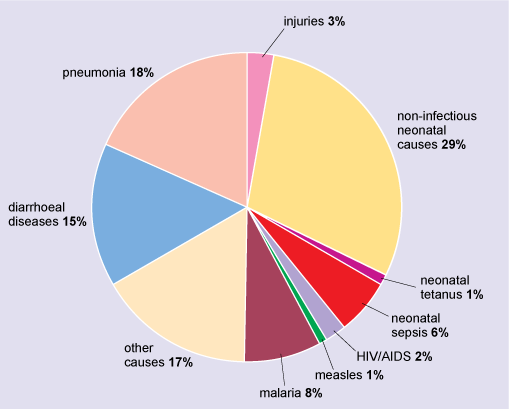1 The global burden of infectious disease
In 2008, a total of 8.8 million children died before their fifth birthday – half of them in Sub-Saharan Africa. Pneumonia, diarrhoea, malaria, HIV/AIDS and measles caused 44% of these deaths in children under five years (Figure 1). Newborn deaths from sepsis and tetanus in the first four weeks of life accounted for a further 7%, and many of the 17% of deaths attributed to ‘other causes’ were also due to infection, including TB and meningitis exacerbated by malnutrition, which contributes to over one-third of all child deaths. (Note that the ‘non-infectious neonatal causes’ depicted in the figure refer to deaths resulting from prematurity, birth asphyxia, trauma and congenital abnormalities.)

Although the impact of infectious disease episodes and deaths is disproportionately felt among the populations of low- and middle-income countries (LMICs), the richer nations of the world have not escaped. For example, infectious and parasitic diseases were responsible for 201 751 admissions to National Health Service (NHS) hospitals in England in the budget year 2010–2011, an increase of 10% on the previous year – the biggest percentage rise of any disease admission group (Hospital Episode Statistics, 2011). It was largely due to a 29% increase in admissions of children aged under 15 with non-hepatitis, non-influenza viral infections, and it confirms a rising trend. This category of hospital admissions has risen by 84% in England since 2006–2007.
